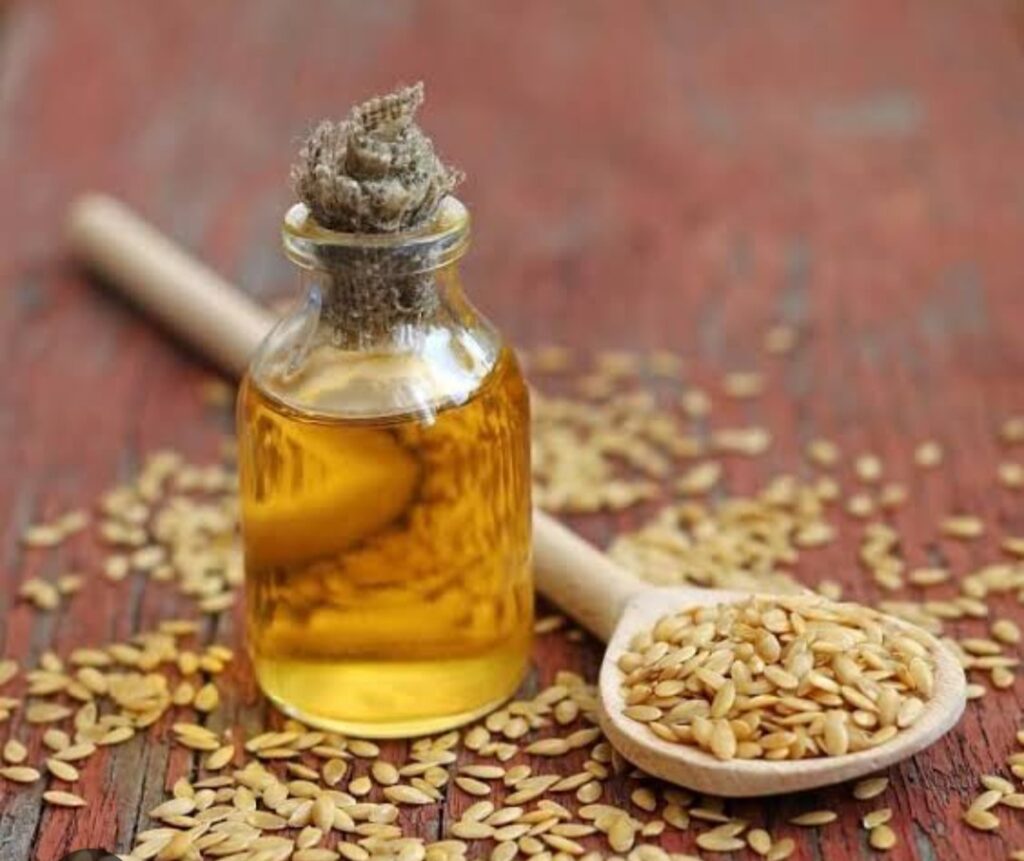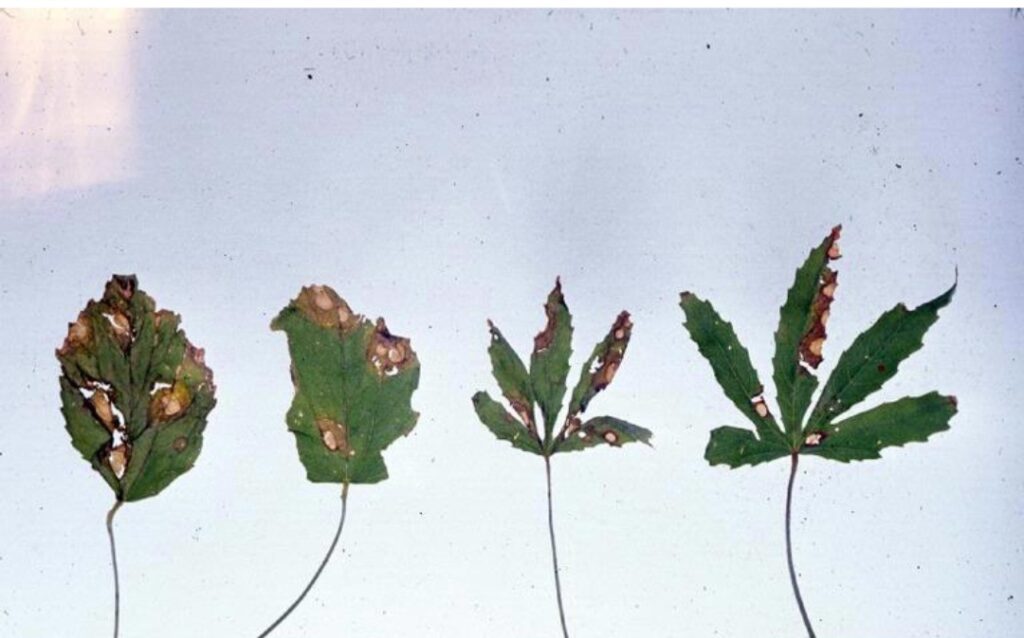
Kenaf ( Hibiscus cannabinus) is a dicotyledonous, herbaceous, annual herb. It is a fiber crop also called Deccan hemp and Java jute. It is a fast-growing plant of the hibiscus, or mallow family (Malvaceae). It is an erect plant that grows up to 4-5cm in hight. It is second to jute in the hibiscus group. Kenaf is grown on a large scale in India, China, Indonesia, Brazil, Kenya and Sudan. The stem contains about 16 -20 % fibre. The fibre is used for packaging begs, cordage ( cords and ropes).
In Africa, the fibre is known as Guinea hemp, while in Indian subcontinent, it is usually called mesta, or ambari. The leaves have acidic aroma and it is used as food. The young stem is used as animal feeds. The left over after processing the stem for fibre is used in paper industries and oil derived from the seed is non drying and used in the industry. Fibre is 10-20 tons/ha. Seed yield of 1.5 tons/ha can be harvested.
Kenaf plants are capable of growing to a height of 20 feet under favorable conditions; however, heights generally average 8 to 14 feet in a growing season of 4 to 5 months.

VARIETIES OF KENAF: There are:
a. the 140- 160 days varieties ( or early maturing varieties)
b. 160 – 180 days ( or late maturing varieties).
The seedling growth after emergence is 35-50 days and it is very slow.
KENAF LEAVES: The leaves are composed of five lance-shaped lobes occurring mainly near the stalk top. They are alternate and simple, with filiform stipules, and pubescent with a length range of 5–8 mm. The leaves have serrated edges .

KENAF FLOWERS: Kenaf yield the best fibre at the flowering stage. The flowers of kenaf plants are axillary, solitary flowers with short pedicels, a stiff epicalyx, and seven to eight bracteoles. The bracteoles are large spreading yellow or pale yellow with a crimson or purple centre. The corolla are borne on short stalks growing from the upper angles between leaf stalks and stems.
The flower has five stigmatic branches emerging from the style after it passes through the staminal column. It also contains a superior ovary. The fruit capsule has five locules and four to five seeds per locule. Kenaf is primarily a self-pollinating crop.

KENAF STEM: Kenaf stem has a height of 2 to 5m . it is slender, with a cylindrical shape and thorny wild accessions.
The kenaf stem has two distinct layers, each with unique features. The outer layer, also known as the bark or bast, is dense and fibrous. while, the inner core is light and composed of wood, with a spongy pith at its centre.
KENAF SEEDS: Kenaf seeds have various shapes such as kidney-shaped, sub-kidney-shaped, and triangular. The seeds mature within four to five weeks after development.

BENEFITS OF KENAF. 1. Kenaf is used for production of paper materials.
2. kenaf is used for producing fibre, energy, and feedstock.
3 .Kenaf is grown primarily due to its horticultural importance; for example, the delicate bast fibre found in its stem , its leaves, and its seeds are used in the medical field as they are rich in medicinal value including antioxidants, anticancer, hepatoprotective activities, analgesic, aphrodisiacs, and anti-inflammatory propertie.

4. kenaf possesses excellent moisture absorption properties and is both renewable and biodegradable. 5. Kenaf fibres have been found to exhibit impressive tensile strengths and moduli, reaching up to 11.9 GPa and 60 GPa, respectively. 6. Kenaf is used in the production of fabrics, ropes, cords, and storage bags.

7. Kenaf fibres are now combined with other materials to create composites employed in diverse industries such as construction, packaging, and furniture.
8. The seeds have various benefits and could be used in making edible oil or biodiesels.
9. The bark is also rich in fibre and can be used for insulation or as a source of biofuel.
10. kenaf is used for phytoremediation of heavy metal contamination. They accumulate the heavy metals in their roots, stems, and leaves.
11. Kenaf (leaves and seed) has being discovered to have many significant medicinal properties, including anticancer, antioxidants, analgesic, anti-inflammatory, aphrodisiacs, and hepatoprotective activities
12. In traditional medicine, Kenaf is used to treat various diseases. For example, the paste of the leaf and stem is used to treat Guinea worms disease and anemia in Africa
13. In ayurvedic medicine, the leaves are used to treat various disorders, such as blood, diabetes, bilious, throat pain, and coughs.
14. The flower juice and seed are consumed for biliousness and bruises .
These medicinal benefits are exposed due to the presence of abundant phenylpropanoid compounds in the Kenaf plant .
15. Kenaf also contain many bioactive compounds, such as omega-3 fatty acids and sterols, as well as phenolic compounds, including kaempferol, vanillic acid, syringic acid, caffeic acid, gallic acid, p-hydroxybenzoic acid, p-coumaric, and ferulic acid which are extracts from the seeds.
16. Of recent, Kenaf seed was used to prepare biopolymer-mediated nanocomposites to enhance seed flour’s antioxidant capacity .
17. In addition, efficient silver nanoparticles were synthesized using kenaf seed extract. It is a promising antibacterial and anticancer agent. etc.
AGRONOMY OF KENAF
CLIMATIC REQUIREMENT: Kenaf requires a warm, moist climate found within tropical or subtropical regions. Also, it thrives in the temperate climates. It thrives better in areas with high rainfall and solar radiation due to its wide range of ecological flexibility.
TEMPERATURE: The optimum temperature for growth is 20°C and ripening continues for 3-4 weeks.
SOIL REQUIREMENT: Kenaf is less demanding on the soil than jute. Although, kenaf is adaptable to various types of soils, but it grows best in well-drained, sandy loam soil with soil pH between the range of 6-6.8. The soil must also be free of nematodes, especially Meloidogyne spp., which has been determined to be a significant issue affecting the production of kenaf, resulting in the stunted growth and death of seedlings .
RAINFALL REQUIREMENT: kenaf does not require excessive heavy rains or strong winds. Rain fall ranges is 600 -800mm per annum. Some varieties need at least 12 hours of light each day throughout the growing season. Due to its extensive root system and lateral spreading of its roots, this plant can respond well to changes in soil moisture. Moisture is favourable for growth. kenaf can tolerate salinity and drought to a certain extent. It is a water-intensive crop, yet it is adaptable to varying levels of water availability, transpiration, and stomatal conductance. When water is not scarce, it exhibits high rates of transpiration and stomatal conductance, but it shows significantly lower rates when water is limited. However, an excess of stagnant water, particularly during the seedling phase, can significantly impede its growth. High humidity and rainfall make kenaf susceptible to fungal diseases throughout the growing season. Pathogens such as Aphis gossypii Glover, Phytophthora, nematodes, and Dysderus cingulatus can damage young shoots, flower buds, and maturing fruits.
PLANTING: Kenaf takes 6 month to reach maturity. But in vitro propagation techniques which is another propagating alternative, it is more faster growth method and reduced labour costs. For commercial production, conventional micropropagation techniques can be employed. This method is a labour-demanding methods of making elite clones and are only useful for commercial purposes. Other propagation methods of kenaf include: solid culture and liquid culture cultivation.
SPACING: The planting spacing is 50-60 cm×5.6 cm at a planting depth of 3.5cm. The seed rate for fibre is 35- 45 kg/ha. While it is 10 -15kg/ha for seed.
WEEDING: Weed control is crucial in kenaf cultivation. Weeding is done 3 to 4 weeks after planting. But when the plant is established or outgrown the weeds, weeding is no longer needed. Pre-emergence herbicides can be sprayed on emerging weeds. Common weeds in kenaf-growing regions include Digitaria ascendens, Borreria alata, Calapogonium spp., Cleome spp., Cynodon dactylon, and Cyperus rotundus.
FERTILIZER REQUIREMENT: Fertilizer requirement of kenaf is similar to that of jute but nitrogen should not be less than 40-50kg. In countries like South Africa, fertilizer requirement is as follows; 90kg N, 60kg P2O5, 60kgK2O.
HARVESTING: When plants attain 50% flowering, harvesting should commence. kenaf spend six months to become mature. The crops are hand-harvested, Fibres are usually separated from the stalks mechanically, although in some areas,retting, followed by hand stripping, is still practiced. Decortication or removal of bark from stem is best done immediately after harvesting or else quality of fibre will reduce. After decortication, the bark should be dried and soaked in cold water for separation of the fibre. The fibre strands can reach about 3 feet (0.9 metre) long. They are pale in colour and lustrous, with strength comparable to that of jute.
PEST AND DISEASES OF KENAF. PESTS

Kenaf is host to other several insect pests, including pink bollworm, spiny bollworm, blackfly beetle, tussock moth and cotton aphid. These pests do not cause severe damage and yield loss. Pest tolerant vari- eties and crop rotation are the most economic and effective methods of controlling such pests at present.
DISEASES

The primary causal agents of kenaf diseases are Selenosporella spp., causing a root rot and wilts, Rhizoctonia solani (stem rot), Phytium deliense (root rot), Phomopsis spp. (stem spot) and Fusarium species. Soilborne fungi, which affect emergence and soil establishment, will attack kenaf in the first few days after planting. Other diseases include: anthracnose, leaf mosaic, disease caused by nematodes and photoperiodism etc.


